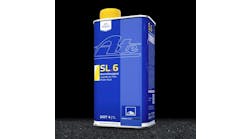We celebrated the 50th anniversary of our Facts Issue in January 2016. The issue featured an unprecedented 23 pages of facts. By comparison, the facts section of our first Facts Issue was only five pages long.
We covered the 2015 domestic tire industry pretty thoroughly, from shipments to market share to plant capacity. Anyone reading the issue would come away with a good understanding of how strong independent tire dealers are, and what they go through to make a profit.
They dominate the retail aftermarket, representing more than 60% of consumer tire sales. They dominate the wholesale market, accounting for 78% of the tires sold at the point of sale.
And the lifeblood of our industry is the single-outlet dealer. Close to 60% of the independent tire dealers in the country own a single store. We profiled one of them in our November 2015 issue. Mike and Charlene Herchick have kept Herchick’s Tire Service Inc. in Macedonia, Ohio, alive through 45 years of trials and tribulations.
They also wonder how much longer they will go on. Herchick’s Tire is surrounded by Discount Tire, NTB, Walmart, Conrad’s Tire, Goodyear and Firestone outlets. In all, there are 14 tire retailers within three miles of their shop.
Since Modern Tire Dealer is the voice of the independent tire dealer, I thought I would address a letter to the editor Mike Herchick sent to us last year, prior to my editorial on his business. “The mom-and-pop gas station, corner grocery store, hardware store and video store have all gone by the wayside,” he wrote. “The small one- to two-store independent tire dealer is NEXT to FAIL!”
I don’t believe that, of course, but he gave five thought-provoking reasons why he believes this will come true. I will list each one as he wrote it, then respond accordingly.
- Millennials’ failure to value service. Members of the millennial generation have unique buying habits. They are certainly more tech savvy than any prior generation of consumers, and they buy online because, well, they can. But they still have to have the tires installed. They still have to take their vehicles somewhere for servicing.
According to Goodyear Tire & Rubber Co., millennials lack confidence in basic car maintenance and think about car maintenance more frequently than other generations. Maybe they just don’t know how to value vehicle maintenance. That gives you a chance to teach them about it.
- Internet tire discounters. Every tire dealer who ever put up a shingle (does anyone say that anymore?) has faced this issue in one form or another. The first discounters sold off the back of trucks or out of their basements, and often didn’t profit enough to compete another day. Fly-by-night Internet tire sellers won’t last, either. Even millennials will figure that out.
- Tire manufacturers selling on Internet direct to the public. According to MTD research, 6% of consumer tire sales last year can be attributed to online sales. My guess is even if all manufacturers eventually decide to sell online, that number will never come close to 20%. One of the reasons is some of those sales will come at the expense of each other, or reputable online sellers like Tire Rack Inc. and Discount Tire Direct. Because the consumer still has to come to your shop for installation, buying online will never be as big a hindrance to your profitability as the store down the street.
- Unfair tier pricing by manufacturers catering to the biggest retailers/wholesalers, i.e., Discount Tire, Tire Rack, Walmart, Dealer Tire and many others. “It’s hard to compete when the BIG GUYS have a 15-30% purchasing advantage,” wrote Herchick. He’s right, but the “big guys” are not wrong. Buying in bulk will always reduce the purchase price because it guarantees significant sales for the manufacturers, and helps them plan for production, which saves them money. It’s a free-market system.
- Failure to adapt to market changes. This one falls directly on the dealer, and Herchick knows it. “If you are selling tires almost at cost just to qualify for your rubber bonus, you obviously never have taken any business courses,” he wrote. “But that is what I hear is going on.” I wouldn’t say he embraces change, but he is not afraid of it.
Mike Herchick has a good rapport with his customers. When I visited him, he was joking with an elderly lady in the waiting room. Shortly thereafter he was helping out the son of a customer, making sure at least one millennial knows where to go for tires and service.
That is a testament to him and his wife. And to the independent tire dealer. ■
If you have questions or comments, please email me at [email protected].
To read more of Bob Ulrich's editorials, see:
Adapt and conquer: Obamacare, Tire labeling and tire registration
Pricing on Chinese tires -- Tariffs are not having the same effect this time around
Getting the words out: Coming to terms with possible tire industry lingo





